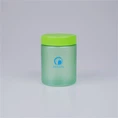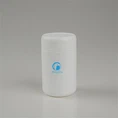Key Properties of HDPE
High Strength-to-Density Ratio: Despite being lightweight, HDPE offers impressive strength and rigidity, making it ideal for carrying liquids and powders.
Chemical Resistance: It resists most acids, bases, and solvents, ensuring product stability during storage and transportation.
Food-Safe and Non-Toxic: HDPE is BPA-free and commonly used in food, pharmaceutical, and personal care packaging.
Recyclable Material: HDPE is a widely accepted material in recycling programs, marked with the recycling code "2".
Weather and UV Resistance: When formulated for outdoor use, HDPE performs well in sunlight and varying temperatures.
Common Applications
HDPE's versatility makes it suitable for many everyday products:
- Plastic bottles for water, juice, medicine, and supplements
- Cosmetic containers like lotion bottles and cream jars
- Industrial drums and chemical storage
- Plastic crates, trays, and bins
- Pipes and fittings in construction and agriculture
Why HDPE is a Sustainable Choice
HDPE is one of the most recycled plastics globally. When collected and processed properly, it can be reused in producing pipes, pallets, plastic lumber, and new containers. Its long life cycle and reusability make it a valuable material in efforts to reduce plastic waste.
Conclusion
HDPE is a reliable and eco-conscious material for manufacturers and consumers alike. Whether you're looking for a safe material for food packaging, durable containers for industrial use, or sustainable packaging alternatives, HDPE delivers consistent performance and cost-efficiency.
















